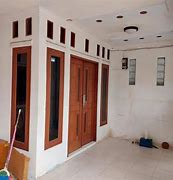
Professor Dewi Fortuna Anwar
Research Professor, Research Center for Politics, National Research and Innovation Agency (BRIN), Indonesia
Dr Dewi Fortuna Anwar is an Academician of the Social Science Commission of the Indonesian Academy of Sciences (AIPI), Research Professor at the Research Center for Politics, National Research and Innovation Agency (BRIN), Chairman of the Board of Directors of The Habibie Center (THC) and Co-Founder of the Foreign Policy Community of Indonesia (FPCI). In 2001-2010, she was Deputy for Social Sciences and Humanities at the Indonesian Institute of Sciences (LIPI). In 2010-2017 Dewi served as a Deputy Secretary to the Vice President of the Republic of Indonesia. Dewi was Distinguished Visiting Professor at the S. Rajaratnam School of International Studies (RSIS), NTU, Singapore in 2017-2018, and Distinguished Visiting Professor at SAIS, Johns Hopkins University in 2007. She has written extensively on Indonesia’s foreign policy, ASEAN and regional political-security issues. Dewi has served in a number of national and international advisory boards of the Centre for Humanitarian Dialogue (HD) since 2019, Stockholm International Peace Research Institute (SIPRI) in 2010-2020, and the UN Secretary General Advisory Board on Disarmament Matters in 2008-2012. She obtained her Ph.D. from Monash University, Melbourne, and her M.A. and B.A. (Hons) from SOAS, University of London.
Clean, Safe, Healthy, Sustainably Managed Resilient Environment and Natural Resources.
To conserve, protect, sustainably manage the environment and natural resources to support Biodiversity and Socio-Economic transformation
i. Enhance environmental, climate change and forestry governance. ii. Sustainably managed and resilient environment and forest ecosystems. iii. Mitigate climate change impacts. iv. Expand agroforestry and commercial forestry. v. Ensure adequate and sustainable resources.
Jennifer Arthur: Animal Science/Pre-Vet
Abigail Buck: Wildlife Biology
Spencer Rock: Forest Ecology and Conservation
During hurricane Sandy in 2012, many businesses in New Jersey were left badly damaged or completely destroyed. Donovan’s Reef, a local restaurant in Sea Bright, NJ was completely washed away by the storm. The restaurant was not rebuilt or reopened for over 5 years, leaving anyone who relied on the business for their livelihood without jobs and without an income (Murdock, 2017). Following Hurricane Sandy multiple family owned businesses like Donovan’s Reef, Seacoast Marina, and Memphis Pig Out suffered as insurance did not account for anywhere near their total costs. (Murdock, 2017; Quittner, 2015). Memphis Pig Out is a barbecue restaurant that was built from the ground up by a local husband-and-wife team, Strassburg and Mark. Following Hurricane Sandy their restaurant suffered over $65,000 in damages but only received $5,000 in insurance coverage, barely a fraction of the rebuilding costs. Immediately, to get renovations started, Strassburg sold every single piece of jewelry she owned but it wasn’t nearly enough. Just to keep their restaurant open the couple had to take on second jobs that paid barely anything. Strassburg took on a nightly magazine advertising job while her husband became a dog walker. This money kept their business afloat but meant they worked excessive hours, spent barely any time together, and still barely pulled their business out of collapse. Despite their best efforts restaurant sales in the years following Sandy fell by over 30% and the business is only reaching pre-Sandy production six years later (Quittner, 2015). Global warming is no longer just an inconvenience in our day to day lives, but is starting to have a real impact on communities.
These two cases are only a couple examples of the devastating effects stronger storms can have. Several factors are the cause of increasing hurricane activity and that the one having the most effect is longer-term climate change (Park, 2012). With climate change comes higher sea levels, stronger winds, and shifting weather patterns that all contribute to increasing the intensity of hurricanes (Dinan, 2017; Wang et. al, 2016; Zhao, 2010; Bender 2010). On top of increasing the intensity of the storms, climate change is also shifting the geographical location of where storms hit, meaning that places that do not normally feel the effects of hurricanes are hit harder than ever before (Lackmann, 2014).
An increase in global temperatures is causing not only ocean temperatures to rise but is also changing air currents. Increasing ocean and air temperatures is causing arctic glaciers to experience major thaws, causing the overall level of oceans to increase more and more each year (McCarthy et. al, 2015; Bender, 2010). These rising ocean levels increase storm intensity because they exaggerate normal effects of tropical storms. Higher water levels during a hurricane, even if they may be minor, cause more water to be moved onto land, which results in more flooding, higher levels of damage, and an overall more powerful storm (Michener, 1997). Additionally, rising sea levels intensify destructive storm surges, which will result in the damage to homes and people (Dinan, 2017; Shao & Goidel, 2016). Warmer water or air contain more energy due to the molecules moving at greater speeds. In other words, a storm taking place within warmer temperatures will always be stronger and cause more damage. Global warming has created the perfect environment for powerful storms to thrive.
Flooding and destruction caused by storm surge waves is a major issue facing coastal communities caught in the path of hurricanes. Powerful currents created by higher ocean levels destroy structures, beach barriers, and fill people’s homes with water. Hurricane Katrina of 2005 caused more than $100 billion in losses and resulted in 2,000 deaths with the greatest coastal flood height ever recorded in the US (Wang et. al, 2016, p. 110). Debris can be washed along with these high levels of water, acting as shrapnel and further adding to the destruction. On top of the added damage, this also adds to the time it takes to clean up after the storm and makes the task more difficult for the communities that are hit.. By 2075, increased coastal hurricane intensity is expected to increase annual damage costs by $35 billion (in 2018 USD) (Dinan, 2017, p. 195). Additionally, by 2075 studies estimate that 2.1% of the population, roughly 11 million people, will experience “substantial expected damage” to their homes, meaning that costs will be greater than or equal to 5% of the average income of people living in the county (Dinan, 2017, p. 196). In simpler terms, if the average income of a person was $65,000 then $3,250 of that would be spent on repairing hurricane damages. When you consider that 11 million people would be paying that, that comes to $35.8 billion in hurricane costs in the next 57 years. A few massive hurricanes would result in dramatically higher damage costs than many smaller hurricanes ever could, especially if they hit geographical locations that are not normally affected and do not have any kinds of storm preparations.
As climate change progresses, the geographical locations of where these large hurricanes hit are slowly but surely shifting directions. Communities that are used to not even worrying about the effects of hurricanes are beginning to experience trouble and are not adequately prepared as a result, meaning there are higher levels of damage inflicted (Shao & Goidel, 2016). After Hurricane Sandy struck, a simulation used to predict how the storm would have behaved in a climate like the one that existed before 1900 versus if it occurred after 2100 showed that as climate change continues to progress, hurricanes will intensify and shift further north (Lackmann, 2014). From this study, conclusions can be drawn that as climate change progresses storms will continue to get stronger while also hitting different locations. Pairing the effects of location change with the effects of changes of air and water on flooding indicate major damage increases in the future if something is not done to solve the problem.
In order to prevent further destruction to new high-risk communities, homes and small businesses must structurally prepare to withstand the effects of hurricanes. A federal incentive to structurally reinforce homes and businesses for hurricanes will vastly decrease damage to structures and the economy, and prevent thousands of people from losing their homes. Primary structures, such as schools and hospitals, in most cities are large concrete or brick buildings that naturally will not have as much of a problem holding up against hurricanes because of the materials used to build them. However, smaller residential buildings such as homes and businesses are more commonly built using weaker materials such as wood. Following Hurricane Sandy, the federal government contributed $60 billion in aid and over $2 billion in loans, yet it was not nearly enough and many small businesses are still recovering today (Quittner, 2015). In order to lessen the overall damage on coastal communities hit by storms, the infrastructure of homes along the east coast must be improved so that they can better withstand the effects of hurricanes. As most people will not hurricane proof their homes just because of a government advisory, including a reason or incentive to do so would greatly increase how many people take preventative measures. In coastal communities that are at a high risk of flooding, purchasing flood insurance is mandatory (FEMA, 2018). Rates for flood insurance are already very low due to the government requiring all homes in flood-prone areas to have flood insurance and due to the fact that flood insurance covers only a small percentage of total damage losses (Quittner, 2015). The majority of citizens are shockingly unaware of what flood insurance covers and how much this covers of their potential damage loss. A survey of Floridian residents following Hurricane Irma in 2017 showed that at least 73% of citizens were wrong when reporting their insurance deductible, assuming it was far less than the true number of $5,000 (NHSI, 2017). An insurance deductible of $5,000 means that those citizens are responsible for the first $5,000 in damages before insurance will kick in. The majority of these people thought they would be responsible for only the first $1,000. Once informed of the true numbers, over 55% of surveyed citizens reported it would be impossible for them to pay damages that costly (NHSI, 2017). Thus, flood insurance is not nearly as beneficial as it seems and in order to be effective it must be paired with prevention methods such as structure reinforcement. It would be impossible to enforce blanket insurance on such a wide range of people if rates were exceedingly high as many people don’t understand the benefits of flood insurance and are unable to pay high rates. Thus, the government has made the rates unbelievably low in order to make sure it’s possible to ensure all at-risk homes at an affordable price. An incentive for people to hurricane proof homes would be to raise the rates of flood insurance for people that do not meet certain building standards by a set time. Hurricane proof homes are less of a risk for flooding than homes that are not reinforced, it only makes sense that higher risk homes be charged more for insurance. Think about how teenagers who just got their driver’s license have to pay more for car insurance because they are not experienced and are more likely to get in an accident. Not only would this cause more people to update their homes to avoid higher rates, but would also put more money back into the national flood insurance program to be used in the future. Insurance companies would save money because they would not have to cover the costs of damages as much for reinforced homes that were not affected as severely.
However, flood insurance is not the only, or best, way to handle increasing hurricane threats. Pairing better insurance with stronger, more resilient homes is the best way to double-attack the problem. There are many preparations that can be taken to help protect homes and businesses in the event of a hurricane. Damages from hurricanes are most commonly the result of high winds and flood waters, with around 80% of damage being caused by unexpected wind entry (Willis, 2006). Winds have the potential to tear apart the roofs on buildings or pick up small objects and make them fly through the air like projectiles. Flood waters can surge into homes causing severe water damage, and if high enough, have the potential to wash away small structures. One preparation to avoid these damages is to fortify doors and windows, as these are the most vulnerable parts of a home during a large storm. While there are temporary solutions to these problems such as piling up sandbags to block flooding or putting plywood over windows, the best solution would be purchasing more permanent solutions. Permanent solutions would include things such as buying and installing impact resistant windows that could withstand damage done by a storm. To install ten impact resistant windows in a home built after 1978, the cost would be about $8,600 (Renoviso, 2018). Another option is to build a flood wall around your home to block or slow flood waters before they reach the structure. The cost to build a 180 foot long floodwall that was 3 feet high around your home would cost about $20,000 (FEMA, 2013, p. 113). Although these options may seem expensive, if waves have the chance to crash up onto a home full force and windows shatter and flood waters get in, just three inches of water entering your home can cost about $30,000 in both damage repairs and loss of personal property for a 2,500 square foot home (FEMA, 2017, p. 1). If installing impact resistant windows and a flood wall prevents water from entering your home after just one year, you would have already saved $1,400 in damage costs. While these types of preparations are a large upfront cost, constructing a home or business with these improvements would prevent damage caused by hurricanes and would ultimately save money because people would not have to pay to rebuild or repair their homes.
Rebuilding and relocation costs following hurricane damage puts heavy strain on local economies. Preparing infrastructure to withstand higher intensity storms will save money on repairs and also allow the local economy to bounce back more quickly. The majority of hurricane damage comes from extreme winds that tear these types of buildings apart (Willis, 2006; University of Rhode Island, 2015). Thus, new building code require homes to be protected against wind in areas that may receive winds greater than 120 mph, such as most coastal areas (University of Rhode Island, 2015). Coastal communities are commonly known to have many small businesses and tourist attractions along their shores, if these buildings were hurricane proof and reinforced to withstand powerful waves and storm surges, then after clean up was done people would be able to resume working at these places rather than have to rebuild their livelihood. During Hurricane Sandy multiple family owned businesses suffered as buildings were unenforced and insurance did not account for anywhere near their total costs. Following Hurricane Sandy in New Jersey, the Sandy Hooks Pilots Association suffered over $8 million in damages with an additional $6 million being spent on rebuilding new headquarters; while the group received less than $1 million in flood and property insurance (Quittner, 2015). This highlights how small a portion of damage costs that flood insurance actually covers. Thus simply having flood insurance is not enough protection, structure reinforcement is necessary to prevent these high costs. On a smaller scale, a family owned marina company experienced only $300,000 in damages from Hurricane Sandy and only $55,000 of this was covered by flood insurance (Quittner, 2015). Reinforcing infrastructure means less money spent on repairs, and less money lost due to production stopping all together. While not due to structural damage, Gillinder Glass–a family owned business for six generations in Port Jervis, NY–demonstrates the losses a business can experience just from shutting down for two days after Hurricane Sandy. Unprepared for the effects of a major storm, the backup generators were unable run the furnaces and $50,000 worth of material cooled and became unusable. They received a $50,000 insurance payout, but loss of sales and production made them lose about $150,000. Learning to prepare for the worst, the company invested tens of thousands of dollars in stronger generators, which was still a lower cost than what they lost from reduced production, to prevent such an event from happening in the future (Quittner, 2015; University of Rhode Island, 2015). Fortunately, the economic costs were limited to a few days, but if Gillinder Glass were destroyed in the storm and was unable to reopen for 3 years, it would result in a $54.8 million loss for the company and 80 people unemployed. Preparing structures for the worst will allow for their enhanced ability to come back after disaster while also maintaining a stable economy (NOAA, 2017; DePietro, 2016).
The state of California is not one to face severe tropical storms like the coastal communities of the southeastern United States. While it may get to enjoy regular sunny days with few storms, this state faces a different danger, yet California has found a way to manage living with this threat. Earthquakes often violently rock some cities of California, suddenly and without any warning. One moment everything may be fine and the next, the ground rumbles and everything starts to shake, especially homes and businesses that are not prepared for this occurrence. For many years these abrupt shakes wreaked havoc in California, leaving a path of destruction that would cost millions in repair. In 2011 alone, earthquakes caused over $54 billion in damages (DePietro, 2016). Every time an earthquake occurs the average cost of repairs to an affected home is $30,000; while the cost to reinforce a home against earthquake damage typically only ranges from $4,000 to $7,000 (DePietro, 2016, para. 9; Home Advisor, 2018, para. 5). In recent years, these damages have been reduced by following earthquake preparation plans to reinforce homes against damage. Californians living in areas at risk of earthquakes are advised to make improvements to their homes, both small and large, to prepare for these random quakes. The most at-risk homes are ones that were not reinforced (Home Advisor, 2018, para. 1-2). Citizens are required to build their homes according to seismic building standards to prevent large scale damages, and to secure indoor objects to walls and floors to prevent them from falling and causing harm during a quake (DIY Science, 2018). Preparations such as these can greatly save homeowners in the chance of an earthquake. For example, if an unprepared house were to slide off its foundation during a earthquake, repairs may cost as much as $400,000, whereas the cost of preventive measures will cost only between $2,000 and $10,000 (Lin II, 2015; Home Advisor, 2018). Since reinforcement has been broadly implemented earthquake damage costs have been greatly reduced. While in 2011 they caused over $54 billion in damages, by 2013 earthquakes only caused $45 million in damages, a drastic difference (DePietro, 2016). This highlights how effective damage prevention can be. Moreover, these types of preparations should be considered when looking at preventing hurricane damages. While hurricanes and earthquakes are very different, both are extremely destructive. Fortunately, damages for both can be minimized if local policies are changed to require proper preparations.
Despite the promising benefits, a major basis of resistance to this proposal is how costly it is for the average person to reinforce their home. However in the long run, it will cost less to reinforce homes now than it would cost to deal with both damages and relocation costs after the hurricanes hit. Tornadoes are a major damage cost in the United States. One year, storms and tornadoes combined caused over $29 billion in property damage (Alrashed, Kantamaneni, & Phillips, 2017, p. 225). Due to increasing damage levels, engineers developed and tested wind-resistant home designs using simulations. Different methods of previous tornado protection were compared to this new technology, which involved building a retractable steel dome around the home, to see the pros and cons of this idea before it was actually implemented (Alrashed, Kantamaneni, & Phillips, 2017, p. 230). The same thought process should be used when considering the damage done by hurricanes. While reinforcement during construction is costly and complicated, the costs vary from plot to plot based on area, country, number of floors, house size, and construction costs. Overall, construction of damage-resistant homes would increase construction costs by nearly 30% (Alrashed, Kantamaneni, & Phillips, 2017). However, these increased costs are little when considering the long-term costs of reinforcement, money saved on not rebuilding homes after a tornado incident would make up for the money spent (Alrashed, Kantamaneni, & Phillips, 2017; DePietro, 2016). Stronger homes will save people the costs of rebuilding their home after a storm since it would mean homes were resistant to flying debris and strong winds. Additionally, hurricane proofing a home will increase its market value both because future owners will not need to do so, and because the more reinforced a home is, the more damages insurance will cover and the lower insurance rates will cost (CPCF, 2018; Goodman, 2017). Insurance carriers offer discount rates for homes that are more reinforced and protected against storms such as hurricanes because damage is then due to hurricane strength, rather than weakness of home structure (DePietro, 2016, para. 17; CPCF, 2018; CPCF, 2018). Hurricane intensity is increasing and damages to homes will go up accordingly. It is of the utmost importance that U.S. citizens in flood-prone areas become better prepared and protected for these natural disasters.
While this solution of preparing homes for the increasing frequency of strong hurricanes may seem somewhat indirect, combating this issue in another way is not plausible. Global climate change is too far along at this point that even if we were to stop all carbon emissions today, there would still be relevant effects on our climate that would not go away. While working towards a greener climate, we need to also prepare ourselves for the inevitable by advising people to reinforce their homes. People are driven by money, and if the rates of flood insurance are going to increase if people do not follow this advisory then people will be likely to comply. While not everyone will listen because it is impossible to guarantee one hundred percent participation, the increased number of reinforced homes will help lessen the damage costs. On top of that, higher flood insurance rates will put some money back into the national flood insurance program that desperately could use the help. Not only will reinforcing homes and small businesses help lessen damage inflicted on the structures, but will also help protect buildings in surrounding affected areas by reducing debris from things breaking. Everything has a chain effect and because stopping the source of the problem, global warming, is not an immediate possibility, combatting the storm surge is the next plausible step for stopping the chain reaction of destruction caused by stronger hurricanes. It is important for people to continue working towards a cleaner atmosphere and reducing the effects of climate change, but at this point we also need to start making changes in the ways we live in order to deal with the changes we have caused.
Alrashed, I., Kantamaneni, K., & Phillips, M. (Aug 2017) Cost vs. Safety: A Novel Design for Tornado Proof Homes. HBRC Journal, 13, 223-232. doi: 10.1016/j.hbrcj.2015.05.004
Bender, M. A., Knutson, T.R., Tuleya, R.E., Sirutis, J.J., Vecchi, G.G., Garner, S.T., & Held, I.M. (Jan 2010). Modeled Impact of Anthropogenic Warming on the Frequency of Intense Atlantic Hurricanes. Science, 327, 454-458. doi: 10.1126/science.1180568
Citizens Property Insurance Corporation of Florida. (CPCF). (2018). Be Safe, Save Money. Citizens Property Insurance Corporation. Retrieved from https://www.citizensfla.com/ discounts
Citizens Property Insurance Corporation of Florida (CPCF). (2018). Strengthen Your Home. Citizens Property Insurance Corporation. Retrieved from https://www.citizensfla.com/ strengthen-your-home
DePietro, A. (Nov 2016). How Much It Really Costs to Protect Your Home Against Natural Disasters. GoBankingRates, 3. Flood: Overview – 4. Hurricane: Overview. Retrieved from https://www.gobankingrates.com/saving-money/much-really-costs-protect-home- against-natural-disasters/
Dinan, T. (Aug 2017). Projected Increases in Hurricane Damage in the United States: The Role of Climate Change and Coastal Development. Ecological Economics, 138, 186-198. doi: 10.1016/j.ecolecon.2017.03.034
DIY Science. (2018). How to Prepare for an Earthquake. California Academy of Sciences. Retrieved from https://www.calacademy.org/explore-science/how-to-prepare-for-an- earthquake
Federal Emergency Management Agency (FEMA). (2018). Flood Insurance Requirement. Retrieved from https://www.fema.gov/faq-details/Flood-Insurance-Requirement/
Federal Emergency Management Agency (FEMA). (2017). Estimated flood loss potential [data file]. Retrieved from https://www.fema.gov/media-library-data/1499290622913-0bcd 74f47bf20aa 94998a5a920837710/Flood_Loss_Estimations_2017.pdf
Federal Emergency Management Agency (FEMA). (2013). Costs and benefits of floodproofing methods [data file]. Retrieved from https://www.fema.gov/media-library-data/20130726- 1649-20490-2887/fema_102_chapter_5.pdf
Goodman, J. (2017, September 26). Hurricane-Proof Houses: The new normal. Builder Online. Retrieved from http://www.builderonline.com/building/structure-durability/hurricane- proof-houses-the-new-normal_o
Home Advisor. (2018). How Much Does It Cost To Repair Earthquake Damage?. Home Advisory Incorporation, 1. Retrieved from https://www.homeadvisor.com/cost/disaster- recovery/repair-earthquake-damage/
Lackmann, G.M. (Jul 2014). Hurricane Sandy Before 1900 and After 2100. American Meteorological Society, 1, 1-14. doi: 10.1175/BAMS-D-o 14-00123.1
Lin II, R. (Feb 2015). Retrofitting pre-1979 homes can prevent much costlier quake damage. L.A. Times. Retrieved from http://www.latimes.com/local/california/la-me-quake-home- explainer-20150213-story.html
McCarthy, G.D., Haigh, I.D., Hirschi, J.J.M, Grist, J.P, & Smeed, D.A. (May 2015). Ocean Impact on Decadal Atlantic Climate Variability Revealed by Sea-Level Observations. Nature, 521, 508-510. doi: 10.1038/nature14491
Michener, W.K., Blood, E.R., Bildstein, K.L., Brinson, M.M., & Gardner, L.R. (1997). Climate Change, Hurricanes and Tropical Storms, and Rising Sea Level in Coastal Wetlands. Ecological Applications, 7(3), 770-801. doi: 10.2307/2269434
Murdock, J. (May 2017). Sea Bright Restaurant Destroyed By Sandy Opens For Memorial Day.
News 12 New Jersey. Retrieved from http://newjersey.news12.com/story/35520476/sea- bright-restaurant-destroyed-by-sandy-opens-for-memorial-day#.WSdXg8fdZVM.twitter
National Oceanic and Atmospheric Administration. (October 2017). What Threats Do Coastal Communities Face?. NOAA. Retrieved from https://oceanservice.noaa.gov/facts/coastal threat.html
NHSI. (Dec 2017). News Release: More Active Storm Seasons Are “New Normal” and Floridians Need to Get Homes, Insurance, Plans Ready. National Hurricane Survey Initiative. Retrieved from http://hurricanesafety.org/more-active-storm-seasons-are-new- normal-and-floridians-need-to-get-homes-insurance-plans-ready/
Park, L. (Jul 2012). Comparing Two Long-Term Hurricane Frequency and Intensity Records from San Salvador Island, Bahamas. Journal of Coastal Research, 28, 891-902. doi:10.2112/JCOASTRES-D-11-00065.1
Quittner, J. (Oct 2015). Where They Are Now: 5 Businesses Hit by Hurricane Sandy. Business Insurance Inc., 1-5. Retrieved from https://www.inc.com/jeremy-quittner/hurricane -sandy-three-years-later.html
Renoviso (2018). Projected cost of window installation. Renoviso: Home Improvement Made Simple. Retrieved from: http://renoviso.com/projects/new?build=true
Shao, W., & Goidel, K. (Nov 2016). Seeing is Believing? An Examination of Perceptions of Local Weather Conditions and Climate Change Among Residents in the U.S. Gulf
Coast. Risk Analysis: An International Journal, 36, 21-36. doi: 120385390.
University of Rhode Island. (2015). Current and Emerging Technologies of Hurricane Protection.
Hurricanes: Science and Society. Retrieved from http://www.hurricanescience.org/ society/risk/currentandemergingtech/
Wang, C., Li, Q., Pang, L., Zou, A., & Zhang, L. (Dec 2016). Hurricane Damage Assessment for Residential Construction Considering the Non-Stationarity in Hurricane Intensity &
Frequency. doi: 10.1007/s13131-016-0828-7
Willis, G. (Jan 2006). Hurricane-Proof Your Home. CNN Money, 1. Retrieved from http://money.cnn.com/2005/10/21/pf/saving/willis_tips/index.htm
Zhao, M., & Held, I.M. (Dec 2010). An Analysis of the Effect of Global Warming on the Intensity of Atlantic Hurricanes Using a GCM With Statistical Refinement. Journal of Climate, 23, 6382-6393. doi: 10.1175/2010JCLI3837
Megaco (resmi H.248) adalah sebuah implementasi dari Media Gateway Control Protocol arsitektur [1] untuk mengendalikan Media Gateways di Internet Protocol (IP) jaringan dan masyarakat beralih jaringan telepon (PSTN). Dasar umum arsitektur dan antarmuka pemrograman awalnya digambarkan dalam RFC 2805 dan saat ini definisi Megaco spesifik adalah ITU-T Rekomendasi H.248.1.
Megaco mendefinisikan protokol untuk Media Gateway Controller untuk mengontrol Media Gateways untuk mendukung aliran multimedia di jaringan komputer. Hal ini biasanya digunakan untuk menyediakan Voice over Internet Protocol (VoIP) jasa (suara dan fax) antara jaringan IP dan PSTN, atau seluruhnya dalam jaringan IP. Dalam protokol tersebut merupakan hasil kolaborasi dari kelompok kerja MEGACO Internet Engineering Task Force (IETF) dan International Telecommunication Union ITU-T Study Group 16. IETF standar aslinya diterbitkan sebagai RFC 3015, yang kemudian digantikan oleh RFC 3525.
Istilah Megaco adalah sebutan IETF. ITU kemudian mengambil alih kepemilikan protokol dan versi IETF telah direklasifikasi sebagai bersejarah. ITU telah menerbitkan tiga versi H.248.1, terbaru pada bulan September 2005. H.248 mencakup bukan hanya spesifikasi protokol dasar di H.248.1, tetapi banyak ekstensi didefinisikan di seluruh H.248 Sub-series. Pelaksanaan lain Media Gateway Control Protocol arsitektur ada dalam protokol MGCP bernama sama. Ini digunakan melalui antarmuka yang sama dan mirip dalam aplikasi dan fungsi pelayanan, bagaimanapun, adalah protokol yang berbeda dan perbedaan yang mendasarinya membuat mereka tidak cocok.























